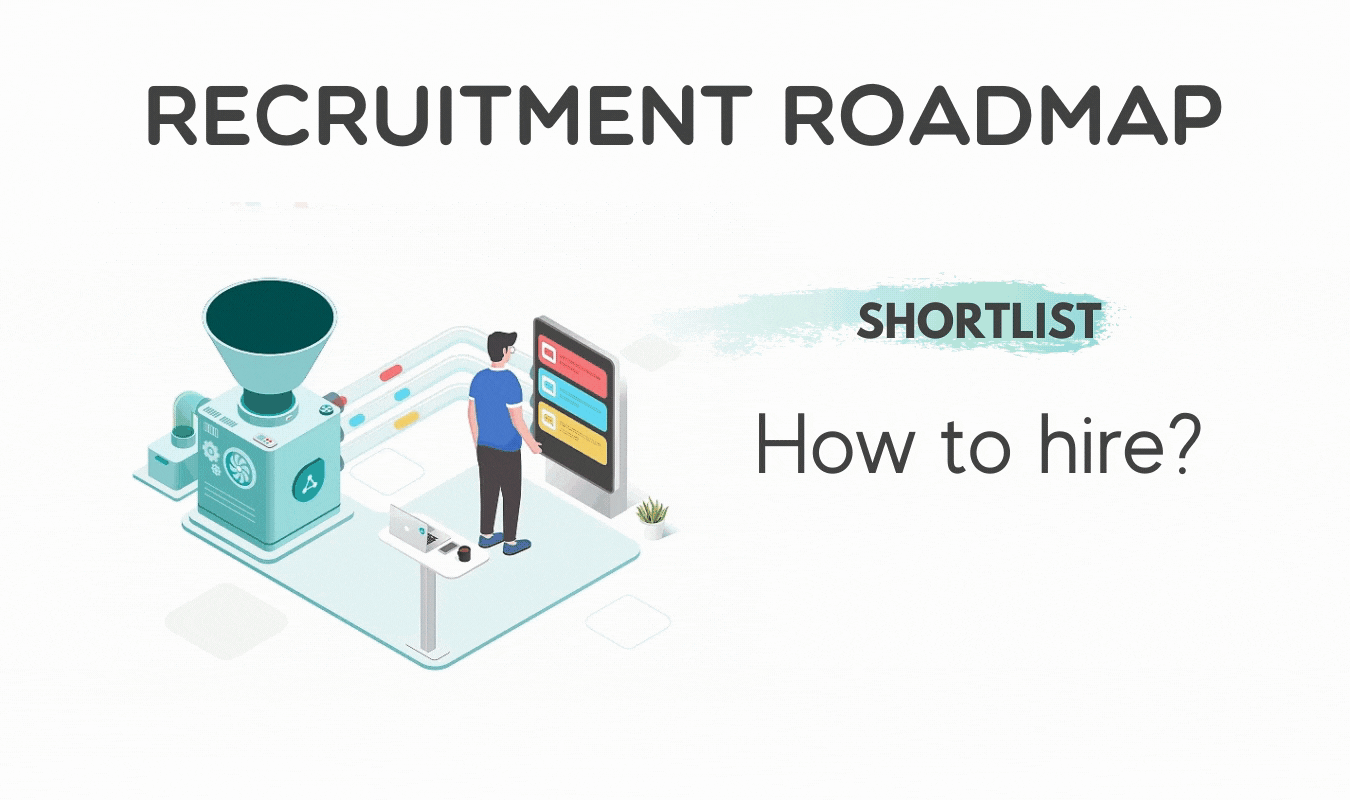Shortlisting - Selecting the best fit talent
The last step before the interview process. This step decides if you're going to spend 200 hours on interviews, or 20.

Welcome back, this is the final step in our 4-part series on recruitment screening. We've already learnt how and where to source for talent. Now you're ready to find the needle in the haystack.

Sorry, the system's pretty broken. On both ends.
After sourcing the right job from the right sources, candidates will start pouring in like water, especially from job boards such as Indeed and Linkedin. These sites ensure optimal candidate experience, which is essential to recruitment. However, job applications are too seamless, leaving us to resort to leveraging on the law of averages. We've seen desperate measures by candidates, who test their luck by spraying hundreds of applications and praying to be awarded interview options. There are even solutions out there, such as LoopCV which helps candidates automate their application (applying for up to 100 jobs a day without any input from the candidate). It is always good to get more candidates. However, it also means that you need to spend extra effort to find your Waldo. It is not uncommon that you will see candidates who come to interview knowing absolutely nothing about the company. Here, we will discuss the key considerations and best practice in candidate selection.
Geo
First and foremost, especially in Singapore, is to consider their citizenship and employment status. Do they have the right Employment Pass (EP) or could you consider helping them apply for one? Although the requirement is often clearly highlighted in the job description, the unqualified always find a way to beat the system. The simplest way to screen through these candidates is to conduct a simple 3-5 minute call to ask through a set of pre-screening questions. If you find this a problem we suggest looking into job boards and application tracking systems that automate this by having the candidate fill up a form before submitting their application.
Software like Impress AI, automate this initial screening by providing a more sophisticated chat-bot to ask the candidates some pre-set questions clearing them for your pipeline. Be wary of candidate experience however, studies have shown a significant number of applicants tend to drop out, unless the process is truly seamless.
Beyond the resume, before the resume. Look for the person.

After qualifying candidates, we next consider their competency and values (character). Now there is no real way of knowing this based on a resume, up until now that is, and trying to infer a persons attributes and personalities from a piece of paper they wrote, is about as bad as spending "6 seconds" per resume, claiming to have understood the human it represents.
While we have seen solutions, trying to overcome this, implementing gamification and psychometric tests before an interview, we've noticed they tend to suffer from an inherent self-review bias. A person isn't going to be able to accurately judge themselves, I probably couldn't tell you my top weaknesses and have the same accurately corroborated by my peers behind my back, and I think very few can. (But then again this a whole other issue, which deserves it's own article). However, we're completely on board with using these to assess a persons attention to detail, conscientiousness, and any kind of hard skill.
The criterion would be to assess and predict one's performance and ability to support your company growth once hired. Key predictor-variables vary between different industries and job functions. If you are hiring a safety engineer, certification requirements such as NDT is a must-have, and an auditor would need the right qualification to have any say at all.
After these cut-off requirements: attitude and personality values come next. As the secret sauce of effective recruitment, this is the most difficult to assess, and time consuming and is typically done through interviews.
Hard skills are next, the easier part of the process. For a hands-on role such as that of a developer, things are more straightforward because these skills can be assessed by looking through their GitHub activities or using technical assessment tools such as HackerRank. If the role requires more conceptual thinking, such as a product owner or a management executive, then situational judgement test through face-to-face interview would be a way to gauge a candidate's suitability.
As you can see, the main blockage in the pipeline, is learning about the candidate's attitude through interviews. Which is why most resolve to assessing hard skills first.
Get in touch with the experts on the candidate
Another great way to find and learn more about the candidate would be through references. Their ex-manager, colleagues are essentially the subject expert on that candidate. They have seen them come to work every day and know the most about their strengths, weaknesses and if they would do great in your company. However, detailed references are not easy to collect as it requires a high amount of man-hours, of a highly skilled person to ensure minimal bias during the collection. That is why it is currently conducted only at the end of the recruitment process and only as compliance as a supplement to the background check. This is information wasted, unavailable to the recruitment process, when it would be most useful.
Information such as whether the candidate strives in more of a startup environment or corporate, what kind of management they require, to best shine in, whether they need a certain degree of micro-management or are complete self starters, these are things that can only be observed after having the person on board with you for a significant time.
Essentially, its best to interview all the candidates in your talent pool. But unfortunately, it would be a highly unscalable model that would only exhaust your talent acquisition team and puts them in a long period of analysis paralysis. With the right screening mechanism, you can ensure the same result, while conducting minimal interviews.
TLDR;
Sorry buddy, but if you really care about the people you're bringing on, you're gonna need to put in the work. Even if that means reading up to 15 minutes worth of articles on the internet.
We spend our days thinking about ways to perfect the magnet we're handing you to find the needle in that darn haystack. We believe this is a 2 way street. Painting that needle red, and making sure the magnets targeted to the right place. We'd love to hear what you think!
If you like our content, be sure to subscribe to our newsletter and give us a shout out. You can also fill this form to let us know what kind of content you would like to see. Stay tuned because our next series on interviewing, on-boarding and post-hire engagement is coming soon!
